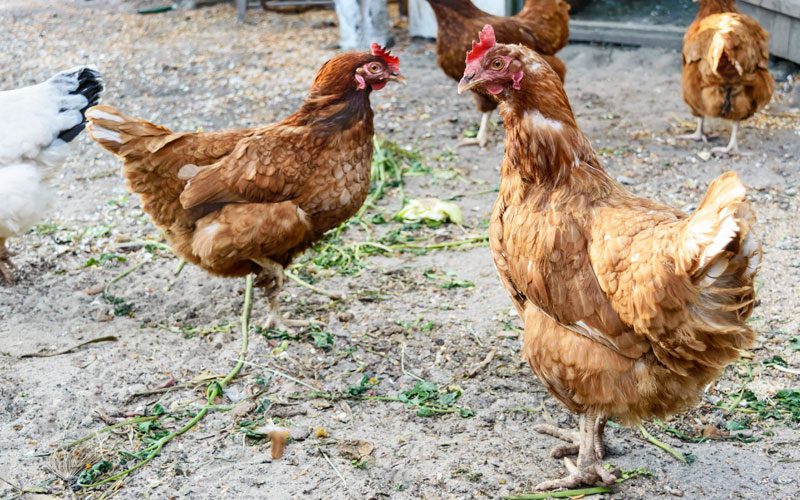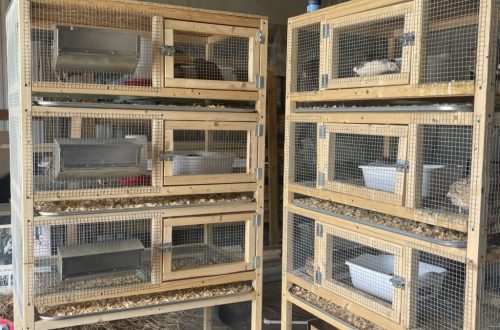
Characteristics of Loman Brown chickens, their advantages and disadvantages
Today, Lohman Brown chickens are considered the most productive in egg and meat direction. Many farmers strive to acquire this particular breed of chickens. They can be bred not only on farms, but also in suburban areas. So what are chickens of this breed?
Contents
Characteristics of the breed
Loman Brown chickens were bred in Germany. Although they belong to the meat-egg type, it was the highest egg production that glorified them. The eggs of these birds are large, with a dense brown shell. During the year, one laying hen is capable of producing about 300 eggs.
In addition, Loman Brown chickens are easy to maintain and care for. They start laying very early, and their high productivity persists for a long time. This breed was formed as a result of crossing hybrids. At home, it is not possible to obtain pure offspring.
Chickens and roosters differ from each other in color. Cockerels usually have two plumage colors:
- Golden brown with black spots.
- White.
The hens have red-brown plumage. By such a different color, it is easy to determine the sex of even a day old chicken.
Like any other species, the Loman Brown chicken breed has advantages and disadvantages.
Advantages
- The breed of chickens Loman Brown is characterized by precocity. Sexual maturity occurs at the age of 135 days, at the same time the hens lay their first egg. At 160-180 days, the maximum egg laying is reached.
- High egg production. A laying hen lays about 320 eggs per year. They are large and weigh 65 g. At the very beginning of laying, they are a little smaller.
- Chickens have a high survival rate, which is 98%.
- This breed of chickens is unpretentious in content. Easily get used to the new conditions of detention. Can be grown in cages.
- From hatching eggs hatchability of chicks reaches 80%.
Disadvantages
- Active laying of eggs occurs within 80 weeks, then the egg production of hens decreases sharply. It no longer makes sense to keep it and are sent to slaughter.
- The best qualities of the breed result from selective breeding. It is not possible to breed them in the subsidiary farm. Remarkable qualities of the breed are not inherited. To update the livestock, chickens or eggs are purchased at special poultry farms.
Features of the content
These birds unpretentious in content, so they are happy to be kept both on farms and on personal plots. They quickly get used to a new place of detention and retain their best qualities even in frosty Siberia.
A spacious range is acceptable for them, as well as floor and cage keeping, so the poultry breeder can choose the conditions that he likes the most. At the same time, he needs to take care of creating comfortable conditions for his birds in order to get the maximum benefit from them.
If chickens are raised in cages, then they must be spacious so that they have place for free movement. If they are kept in semi-free conditions, perches and nests should be made. Moreover, the latter should be enough for these egg-laying hens.
The chicken coop must always be kept clean, otherwise pathogens may appear in a dirty room, which can cause the birds to get sick.
The microclimate of the chicken coop
Although this breed is unpretentious and can be kept in any conditions, nevertheless, for better egg production, it is necessary to create optimum indoor climate. Ideally, the temperature in it should be 16-18 degrees, relative humidity – 40-70%. Too dry and too humid air adversely affects the health of chickens.
In winter, the chicken coop should be insulated. The windows are sealed with a special film, and peat and hay are laid on the floor. Drafts are strictly prohibited. Be sure to need lighting to collect eggs as much as possible.
By the way, egg-laying chickens need a routine. In the morning, they are either let out of the coop, or they turn on the light. Feeding starts after three hours. After that, the feeders are cleaned, throwing out the remnants of food so that harmful bacteria do not divorce. At three o’clock in the afternoon they are fed a second time. After 9 pm, the chickens should rest.
Coop needs to be ventilated every dayso that they suffer from respiratory diseases as little as possible.
Feeding
In order for chickens to have great productivity, they should be given good nutrition. It must be well balanced foodcontaining the right amount of proteins, carbohydrates, minerals and vitamin supplements.
Since the main purpose of Loman Brown chickens is egg production, it is necessary that the feed contains protein in the required amount and mineral supplements, such as chalk, gravel, bone meal. Otherwise, the chickens will not lay well or become seriously ill.
Crushed grain is also introduced into the chicken diet, which is quickly digested in the stomach. If you constantly feed the birds only with vitamin and mineral supplements, for example, a premix, which helps to increase the laying of eggs, then the likelihood of developing diseases in chickens is high and even their death is possible.
If chickens are kept in cages, feed them strictly dosedexcept for overeating. They should receive no more than 115 g of dry compound feed per day, otherwise low mobility can lead to obesity of these birds.
The best food for chickens of any age is corn grits. The diet should definitely include chopped vegetables and fruits. It is useful for birds in cages to give greens.
This German breed has taken root very well in the vastness of our country. They are bred on farms and for personal use, bringing a good profit.





